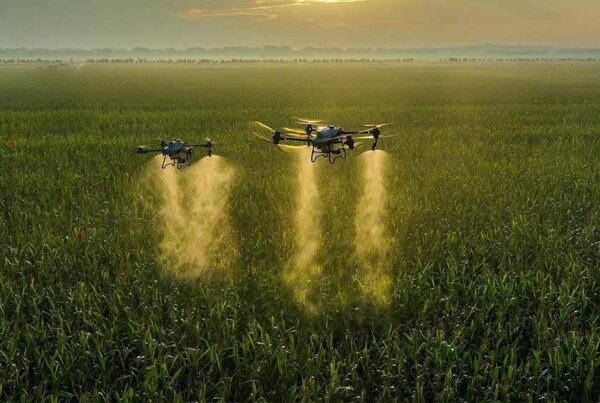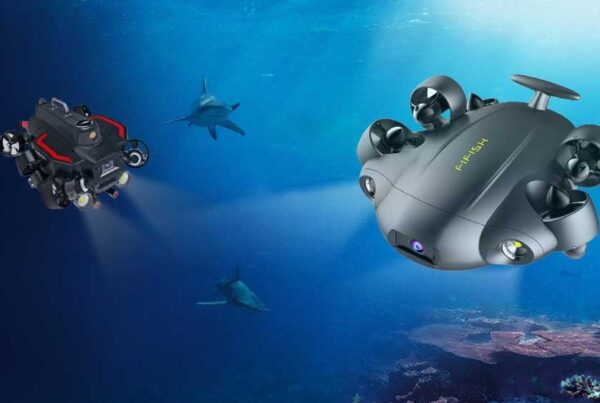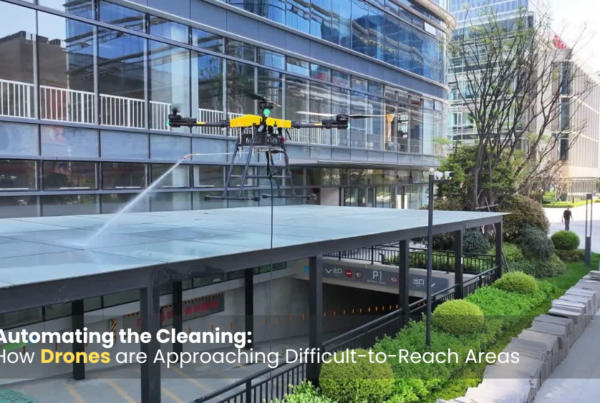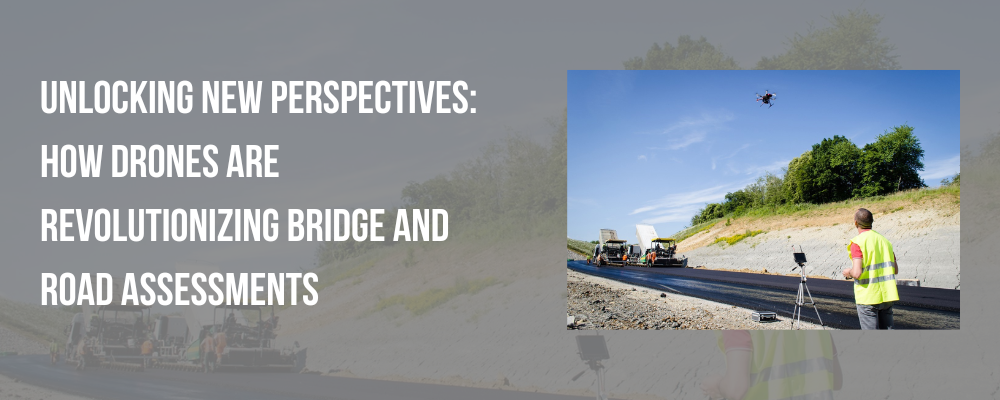
Introduction
In recent years, the use of drones has revolutionized various industries, and the field of bridge and road assessments is no exception. Drones, also known as unmanned aerial vehicles (UAVs), provide a new perspective and advanced capabilities for inspecting and evaluating the condition of bridges and roads. By leveraging drone technology, professionals in infrastructure management can enhance safety, increase efficiency, and gain valuable insights into the maintenance and development of these critical structures.
The Role of Drones in Bridge and Road Assessments
Drones have become invaluable tools in bridge and road assessments due to their ability to access hard-to-reach areas, capture high-resolution imagery, and collect precise data. These unmanned aircraft can be equipped with various sensors, including high-definition cameras, LiDAR (Light Detection and Ranging) systems, and thermal imaging devices, allowing for comprehensive and accurate inspections.
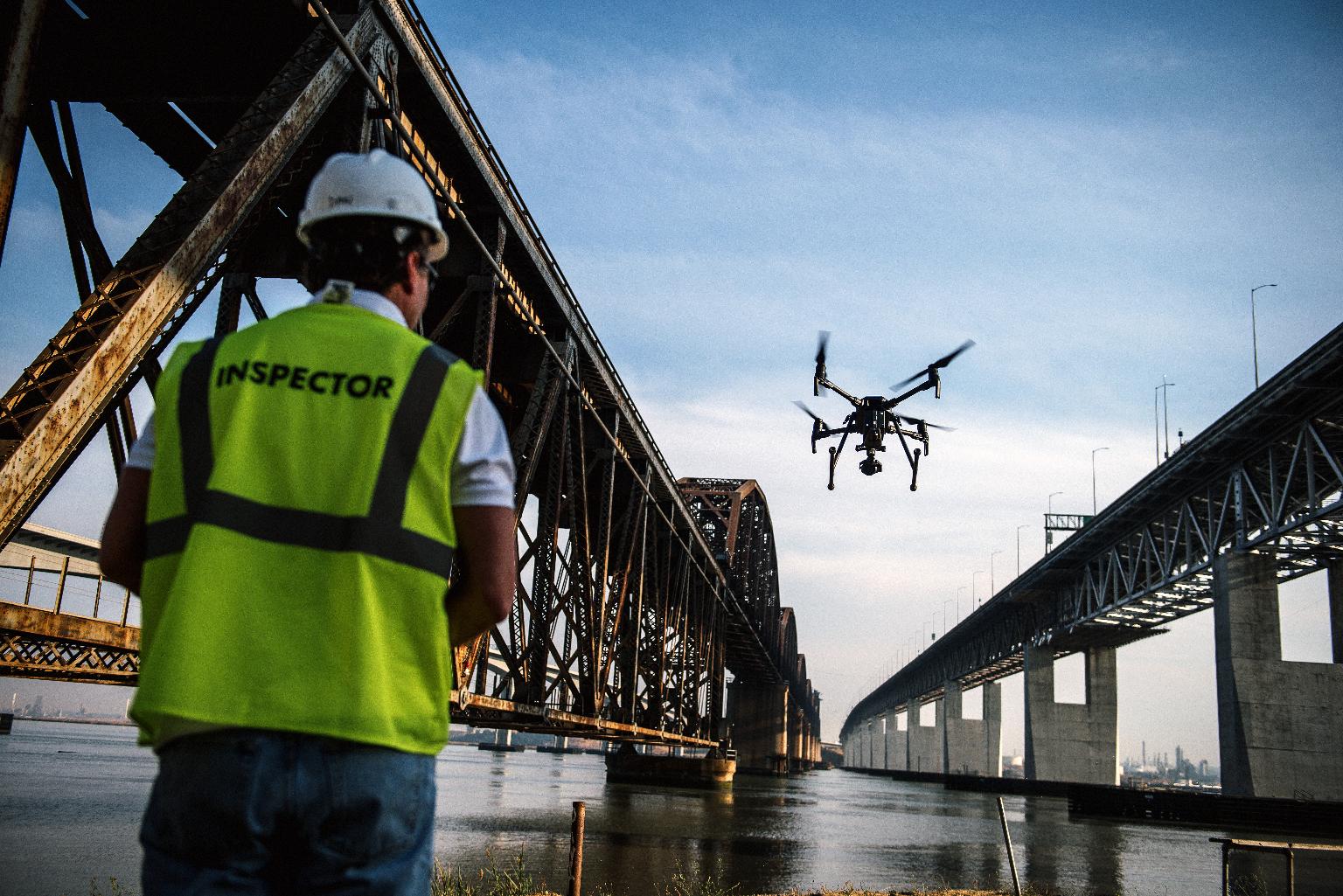
Benefits of Drone Assessments
Enhanced Safety
Traditional methods of bridge and road assessments often involve manual inspections, which can be dangerous and put workers at risk. By utilizing drones, these assessments can be conducted remotely, eliminating the need for personnel to physically access hazardous locations. Drones can navigate challenging terrain, fly at different altitudes, and capture detailed imagery without compromising the safety of inspection teams.
Time and Cost Efficiency
Drone assessments significantly reduce the time and cost associated with traditional inspection methods. The speed and agility of drones allow for rapid data collection and analysis, streamlining the assessment process. Compared to manual inspections that require extensive resources and personnel, drones offer a more cost-effective solution, optimizing the allocation of resources and reducing overall project timelines.
Detailed Visual Inspections
The high-resolution imagery captured by drones provides detailed visual assessments of bridges and roads. These visuals allow engineers and inspectors to identify potential structural issues, such as cracks, corrosion, or deterioration, with greater precision. By detecting these problems early on, proactive maintenance measures can be taken, preventing further damage and ensuring the longevity of the infrastructure.
Accessibility and Flexibility
Drones excel in reaching areas that are difficult to access through conventional means. Bridges, especially those spanning rivers or gorges, often have limited accessibility for manual inspections. With drones, these structures can be thoroughly examined without the need for heavy equipment or disrupting traffic. Furthermore, drones offer flexibility in terms of flight patterns and angles, enabling comprehensive assessments from multiple perspectives.
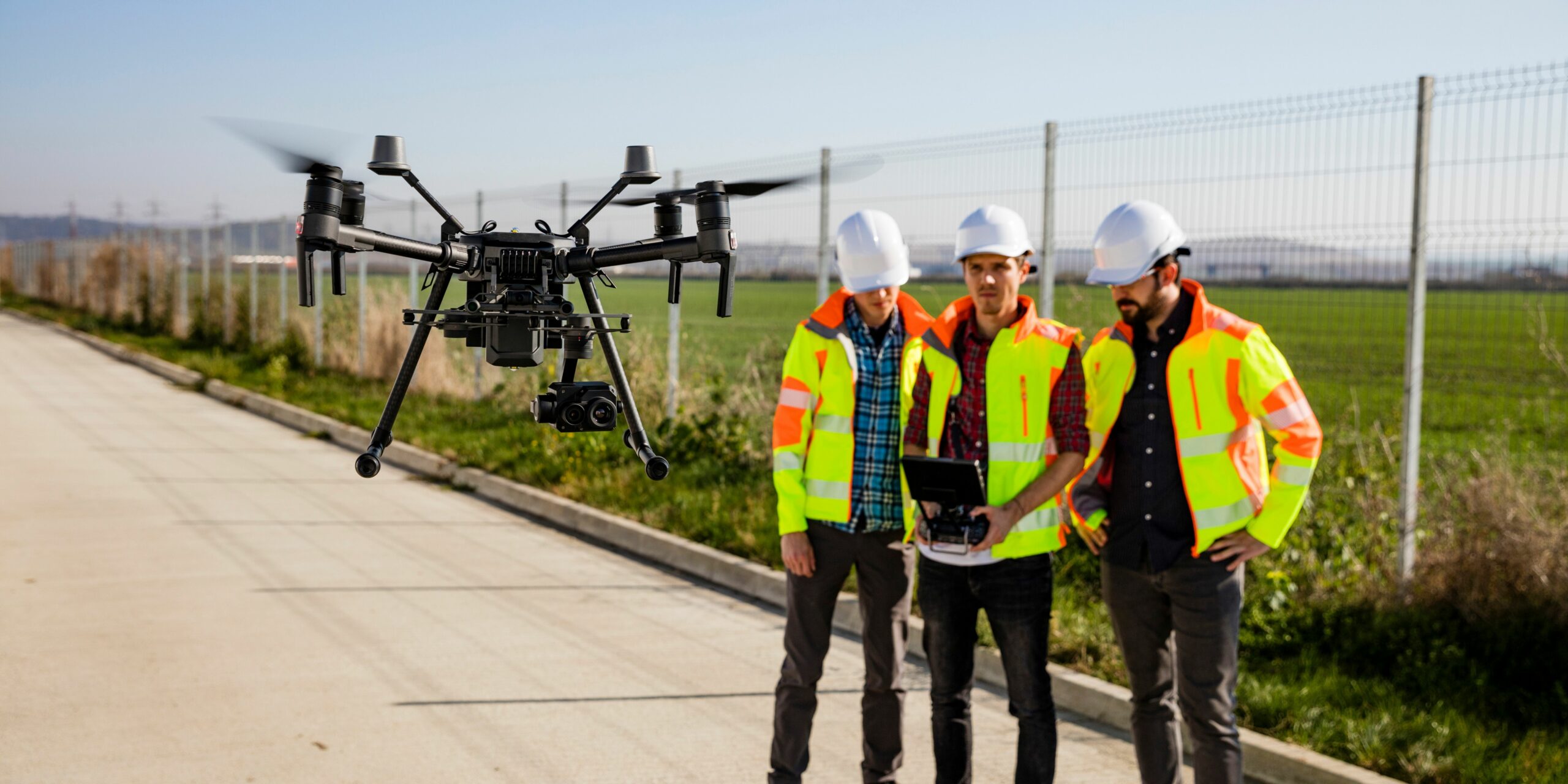
Applications of Drones in Bridge and Road Assessment
Structural Inspections
Drones play a crucial role in conducting structural inspections of bridges and roads. Equipped with high-resolution cameras and other sensors, drones can capture detailed images and videos of the infrastructure from various angles. This allows inspectors to closely examine the condition of the bridge or road, identifying any signs of damage, structural weakness, or deterioration.
With the ability to access difficult-to-reach areas such as the underside of bridges or elevated sections of roads, drones provide a comprehensive view of the infrastructure. They can detect cracks, corrosion, loose bolts, or any other issues that may compromise the structural integrity. By identifying these problems early on, necessary repairs or maintenance activities can be planned and executed, ensuring the safety and functionality of the bridge or road.
Bridge and Road Maintenance
Maintenance is a critical aspect of preserving the lifespan of bridges and roads. Drones have transformed the way maintenance activities are carried out, making them more efficient and effective. With regular drone inspections, maintenance teams can proactively identify areas that require attention and plan maintenance schedules accordingly.
Drones can quickly assess the condition of the infrastructure and generate detailed reports, highlighting specific areas that need repairs or maintenance work. This information helps maintenance crews prioritize tasks, allocate resources effectively, and minimize disruptions to traffic flow. By addressing issues in a timely manner, the overall maintenance costs can be reduced, and the lifespan of the bridge or road can be extended.
Surveying and Mapping
Accurate surveying and mapping are essential for infrastructure planning and development. Drones equipped with LiDAR systems and high-resolution cameras can collect precise data and generate highly accurate maps of bridges and roads. This data can be used for various purposes, including:
- Creating topographic maps to understand the terrain surrounding the infrastructure.
- Generating 3D models of bridges and roads for analysis and design purposes.
- Monitoring land deformation or settlement near the infrastructure.
- Assisting in the planning and construction of new bridges or roads.
Drones provide a cost-effective and efficient solution for surveying and mapping, replacing traditional methods that require significant time and resources. The detailed data obtained through drone surveys enables engineers and planners to make informed decisions, ensuring optimal infrastructure development.
Environmental Assessments
Bridges and roads often have an impact on the surrounding environment. Drones can aid in conducting environmental assessments by capturing aerial imagery and collecting data on various environmental factors. For example, drones can monitor water quality in rivers or lakes near bridges, detect signs of erosion, or assess the impact of road construction on natural habitats.
By gathering data through drone-assisted environmental assessments, infrastructure managers can take necessary measures to mitigate any adverse environmental impacts. This includes implementing erosion control measures, planning wildlife crossings, or monitoring the effects of pollution on aquatic ecosystems. Drones provide a valuable tool for maintaining a balance between infrastructure development and environmental conservation.
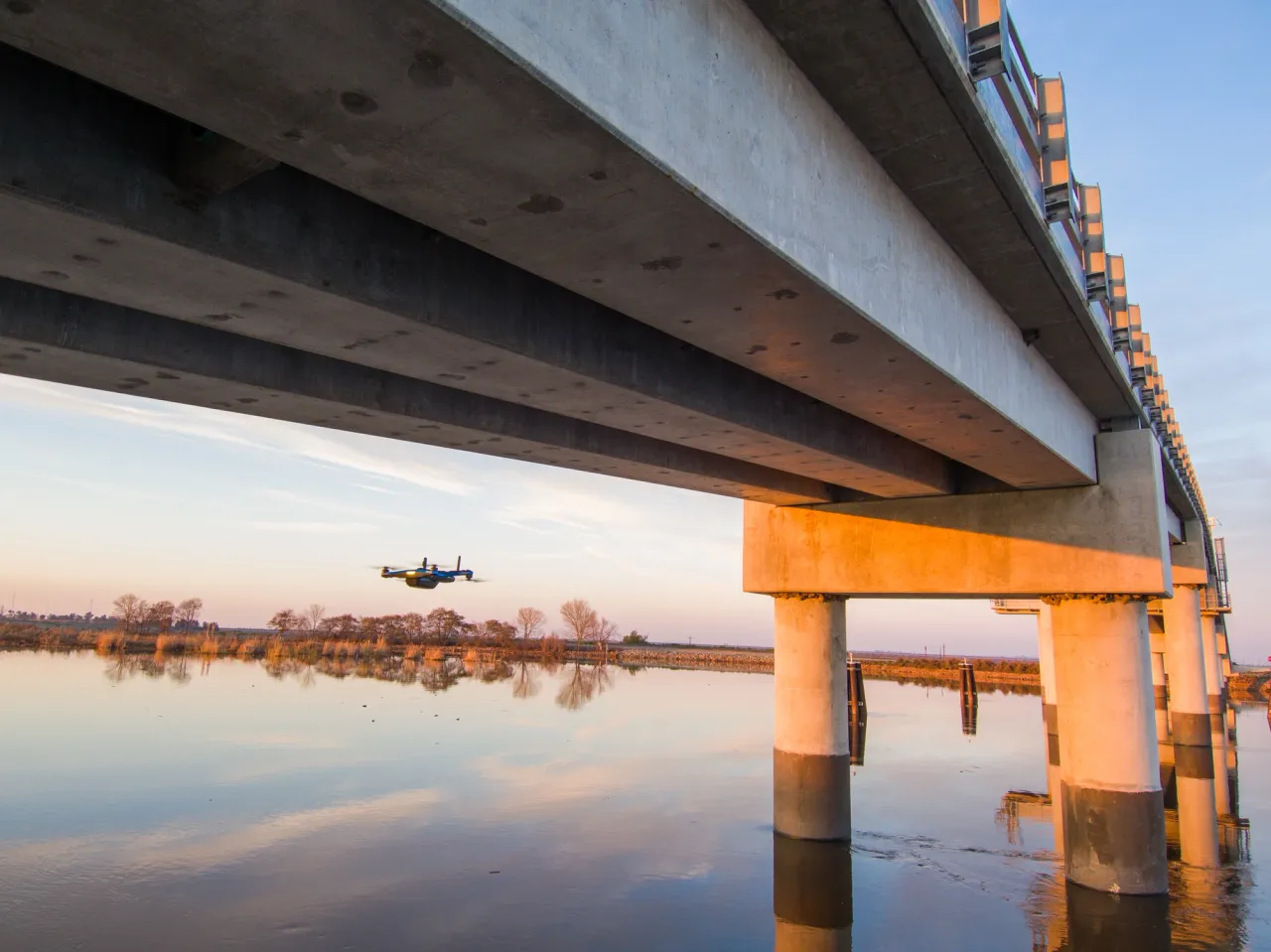
Future Prospects and Innovations
The field of drone technology is rapidly advancing, and this holds great promise for the future of bridge and road assessments. Several innovations and advancements are on the horizon, aiming to further enhance the capabilities of drones in this domain.
Artificial Intelligence and Machine Learning
Integration of artificial intelligence (AI) and machine learning (ML) algorithms with drone assessments can significantly enhance their effectiveness. AI-powered drones can automatically detect and analyze potential issues, such as cracks or structural abnormalities, in real time. This automation reduces the time required for manual inspection and expedites the decision-making process.
ML algorithms can also learn from historical data, enabling predictive maintenance and more accurate risk assessments. By leveraging AI and ML, infrastructure managers can optimize maintenance strategies, improve asset management, and ensure the longevity of bridges and roads.
Advanced Sensors and Imaging Techniques
The development of advanced sensors and imaging techniques is revolutionizing the capabilities of drones in bridge and road assessments. High-resolution cameras with improved zoom capabilities and thermal imaging sensors can provide even more detailed and comprehensive visual inspections.
LiDAR technology is also evolving, allowing drones to create highly accurate 3D models of bridges and roads. This enables precise measurements and analysis of the infrastructure, facilitating better planning and decision-making.
Autonomous Drone Operations
Advancements in autonomous drone technology are paving the way for more efficient and scalable assessments. Autonomous drones can follow predefined flight paths, automatically navigate obstacles, and collect data without constant human intervention. This reduces the reliance on skilled drone pilots and expands the scope of assessments that can be conducted.
Furthermore, the integration of autonomous drones with cloud-based platforms allows for real-time data transmission and analysis. This enables instant access to inspection results and facilitates collaborative decision-making among stakeholders.
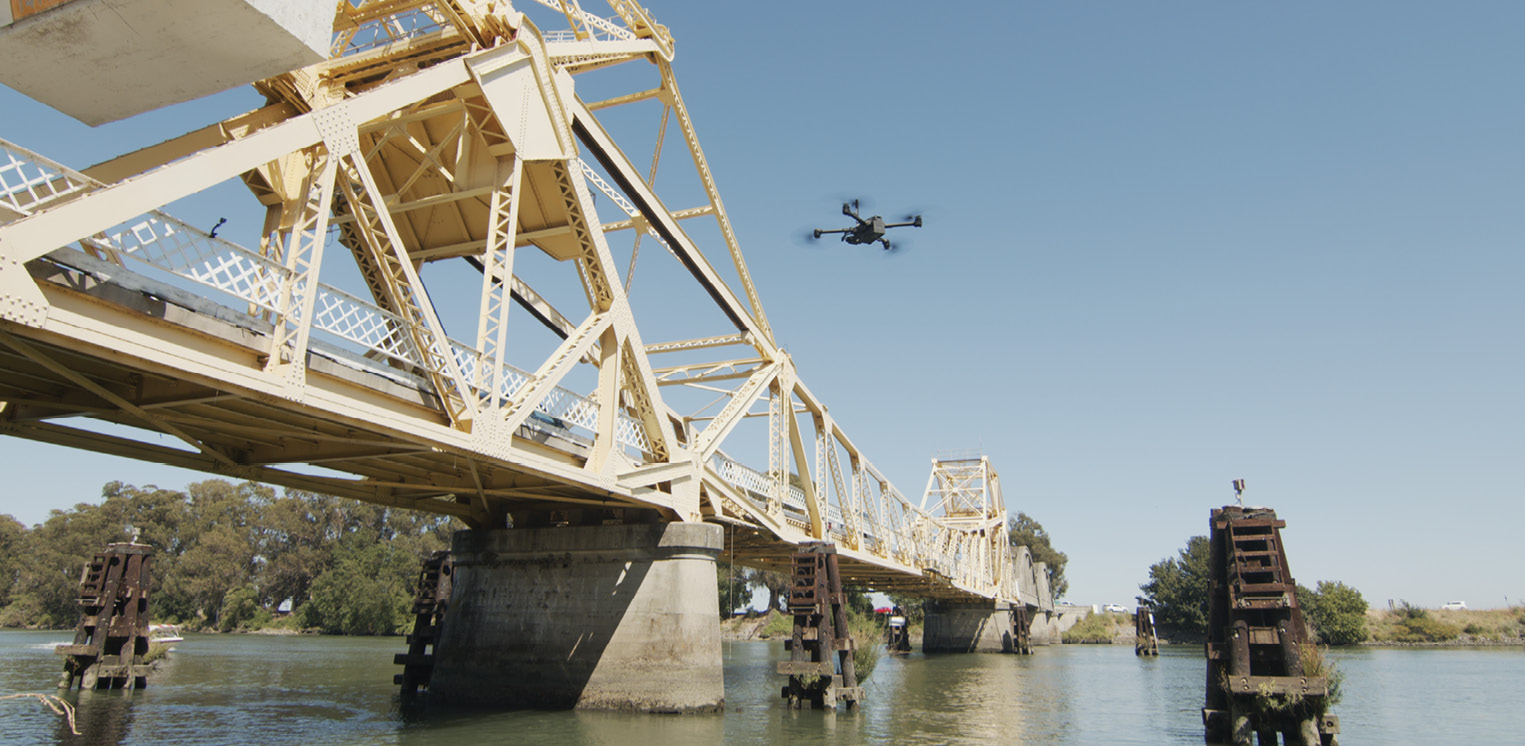
Conclusion
Drones have emerged as a game-changer in the field of bridge and road assessments. Their ability to provide a new perspective, access hard-to-reach areas, and collect high-resolution data has revolutionized the way we evaluate and maintain critical infrastructure. The benefits of drone assessments include enhanced safety, time and cost efficiency, detailed visual inspections, and accessibility to challenging locations.
Through structural inspections, maintenance activities, surveying and mapping, and environmental assessments, drones offer a comprehensive solution for infrastructure management. By overcoming challenges such as regulations, technical limitations, and data management, we can harness the full potential of drone technology.
As we look to the future, advancements in AI, advanced sensors, and autonomous operations will further propel the capabilities of drones in bridge and road assessments. These innovations will pave the way for predictive maintenance, real-time data analysis, and optimized decision-making.
In summary, drones are unlocking new perspectives in bridge and road assessments. They are revolutionizing the way we evaluate, maintain, and develop our infrastructure, ensuring its safety, efficiency, and longevity in the years to come. Embracing drone technology is key to staying at the forefront of innovation and continuously improving our infrastructure for the benefit of society.
Popular tags
Drones for bridge assessments, Road Inspection with drones, Infrastructure assessment with drones

